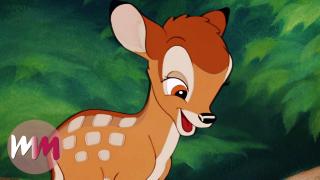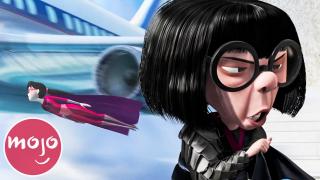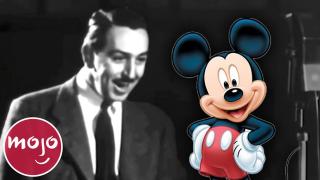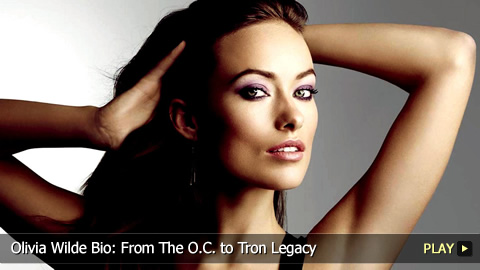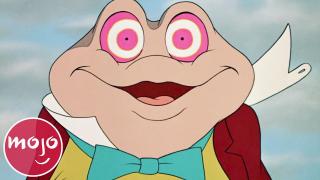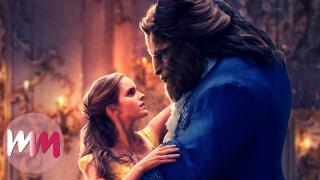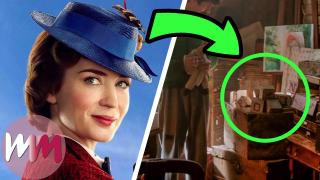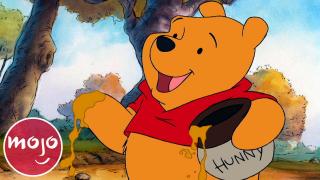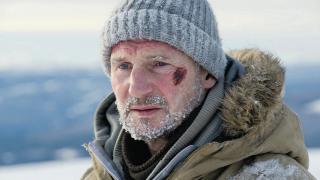Top 10 Disney Movies That Were Revolutionary
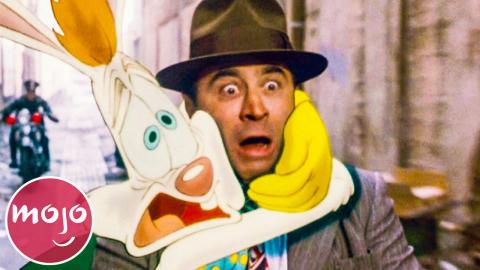
#10: “Bambi” (1942)
Top 5 Fun Facts About Bambi
“Bambi” seems simple on the surface, but there are deeper layers to the story that people often take for granted. Something similar can be said about nature, which “Bambi” captures in ways that few other films have. While Disney had depicted animals in films like “Snow White,” the studio strove to achieve another level of realism with “Bambi.” The crew not only took research trips to the Los Angeles Zoo, but studied real animals at the studio, including two fawns appropriately named Bambi and Faline. Perhaps even more impressive than conveying believable animal movements, “Bambi” was a milestone for emotional realism in animation. The film would change how many view practices like hunting and shine a spotlight on animal cruelty, amounting to the “Bambi” effect.
#9: “The Princess and the Frog” (2009)
Top 20 Uses of Foreshadowing in Disney Movies
Following a five-year hiatus, Disney revisited traditional animation with “The Princess and the Frog.” While the film drew inspiration from the past, it also looked to the future with Disney’s first Black princess. Considering that most Disney fairy tales take place overseas, Tiana is also among the studio’s few American princesses. The film marked a historic moment for representation - and not just at Disney. Looking over the landscape of U.S. feature animation, there had been few mainstream films centered on a primarily Black cast since 1992’s “Bebe’s Kids.” Interestingly enough, that film’s director, Bruce W. Smith, was the supervising animator for Doctor Facilier. Although Disney’s feature animation has sadly since shied away from hand-drawn artistry, the film still signified a turning point for diversity.
#8: “One Hundred and One Dalmatians” (1961)
Top 10 Best Voice Acting Performances in Classic Disney Movies
After years of emphasizing realism, Disney’s animators started to experiment with more stylized works like “One Hundred and One Dalmatians.” In addition to showcasing a more contemporary look and setting, “Dalmatians” brought animation into the future with xerography. Ub Iwerks, Mickey’s co-creator, had developed a xerographic process that could transfer drawings straight to animation cels. Although this would spell the end of traditional inking and painting, xerography would significantly cut down production costs. After experimenting with the technology in “Sleeping Beauty’s” thorn forest sequence and the short “Goliath II,” “Dalmations” went all-in on xerography. Since “Dalmatians” contains over 6,000,000 spots, xerography proved as efficient as it was innovative, even if it took Walt a while to come to terms with the film’s modern aesthetic.
#7: “Tron” (1982)
Olivia Wilde Bio: From The O.C. To Tron Legacy
The computer proved to be the future of animation and live-action filmmaking, although many failed to realize this when “Tron” arrived in 1982. This sci-fi adventure would be among the first features to prominently utilize CGI. Featuring roughly 20 minutes of computer animation, the film blended digital imagery, backlit animation, and live-action elements to create an electronic world unlike anything audiences had ever seen. The film was so groundbreaking that the special effects community wasn’t sure how to respond. Shockingly, “Tron” wasn’t nominated for a Best Visual Effects Oscar with the misconceptions surrounding the computer being its undoing. In time, though, the industry would come to recognize the computer’s artistic merits and the importance of “Tron’s” breakthroughs.
#6: “Fantasia” (1940)
Another film that was underappreciated upon release, “Fantasia” remains among Disney’s most ambitious experiments. With animation still generally being seen as a “lower medium,” “Fantasia” demonstrated how the art form can be every bit as invigorating as a great work of music like “Rite of Spring” or “The Pastoral Symphony.” “Fantasia” not only overflowed with some of Disney’s most dazzling imagery, but it revolutionized sound in motion pictures. Disney’s engineering team and RCA developed a sound reproduction system dubbed Fantasound. This would be the earliest example of what’s now known as surround sound. While “Fantasia” received an Honorary Oscar for its use of sound, it wasn’t until the film turned a profit decades later that people truly realized how ahead of the curve Disney was.
#5: “Who Framed Roger Rabbit” (1988)
Top 10 Disney Movies That Feel Like a Fever Dream
Combining live-action and animated characters was nothing new in 1988. Disney had been experimenting with hybrids as far back as the first “Alice Comedies” 65 years earlier. However, there had never been an endeavor quite like “Roger Rabbit,” blurring the line between ink and paint and flesh and blood. Director Robert Zemeckis achieved such authenticity in a masterstroke of staging, lighting, cinematography, and, of course, animation, which the late Richard Williams oversaw. Technology aside, “Roger Rabbit” was a watershed moment for animation fans, uniting characters from Disney, Warner Bros., MGM, Fleischer Studios, and others. At a time when many feared that feature animation was on the brink of extinction, “Roger Rabbit” was something of a ceasefire with animation rivals joining forces to save a medium.
#4: “Beauty and the Beast” (1991)
Beauty and the Beast (2017) - Top 10 Facts!
Three years after “Roger Rabbit,” “Beauty and the Beast” continued to push animation to unprecedented territory. The film continued to break new technical ground with its iconic ballroom sequence. In terms of storytelling, “Beauty” delivered the studio’s most active heroine and fleshed-out romance yet. With Alan Menken and the late Howard Ashman returning to write the songs, Broadway solidified its presence in animated musicals. The studio knew that they had something special, so much so that Gary Kalkin, a Disney marketing executive, suggested debuting an unfinished version at the New York Film Festival. Following a 10-minute standing ovation, “Beauty and the Beast” went on to win the Golden Globe for Best Picture - Musical or Comedy and become the first animated feature to be nominated for The Oscar’s top prize.
#3: “Mary Poppins” (1964)
Top 10 Things You Missed in Mary Poppins Returns
While Walt Disney won 22 competitive Oscars, “Mary Poppins” marked the only time that he found himself up for Best Picture. Despite not winning that award, Julie Andrews would be honored for her magical performance. The effects team didn’t go unrecognized either, a technical highlight being the jolly holiday into an animated world. Bluescreen might’ve been the norm, but “Mary Poppins” utilized the sodium vapor process, or “yellowscreen” as some call it. The “yellow” in question stemmed from the hue of sodium vapor lights. This technique delivered cleaner results, allowing the filmmakers to convincingly isolate actors (as well as elements like Andrews’ veil) from the backdrops. Although this technology had been touched upon in films like “The Parent Trap,” its presence here redefined the game.
#2: “Toy Story” (1995)
Top 10 Disney Movies That Will Make You Feel Like a Kid Again
After years of being seen as a technological threat, the computer confirmed that it was here to stay with “Toy Story.” Slowly but surely, CG animation would become the new normal for mainstream features in the U.S. While Pixar’s debut feature was praised for its technology, receiving an Honorary Oscar, it wouldn’t have left as much of a cultural impact had the story not been on par with the visuals. Becoming the first animated film to receive an Oscar nomination for its screenplay, the witty dialogue, high concept, and heartfelt character dynamics provided a blueprint that many rival studios would try to replicate. The most successful ones, though, have built upon the innovations first laid out in “Toy Story.” Before we unveil our top pick, here are a few honorable mentions. “The Black Cauldron” (1985) Despite Bombing Financially, It Was Disney’s First Animated Feature to Use CG “Tarzan” (1999) Deep Canvas Allowed the Vine-Swinger to Surf Through a 3D Jungle with a Traditional Touch “20,000 Leagues Under the Sea” (1954) A Masterclass of Art Direction & Special Effects “Sleeping Beauty” (1959) An Epic Worthy of Super Technirama 70 Widescreen “The Little Mermaid” (1989) The Birth of the Disney Renaissance
#1: “Snow White and the Seven Dwarfs” (1937)
Top 10 Snow Movies
Although it was predated by a few other animated features, “Snow White” delivered no shortage of firsts. It was the first cel-animated feature, as well as the first to be made in English and presented in Technicolor. Most notably, it was the first time that many audiences realized that animation could resonate on an emotional level. Up until this point, animation was generally seen as a means to make people smile for seven minutes. Few believed that the medium could be sustained for 83 minutes, let alone make people cry. Despite being prematurely labeled “Disney’s Folly,” “Snow White” had viewers tearing up at its premiere, broke box office records, and earned Walt an Honorary Oscar. Even beyond animation, the film’s innovation is still felt today.


